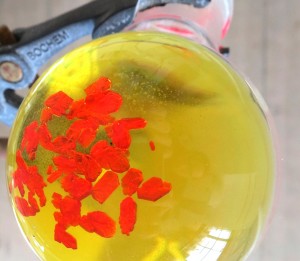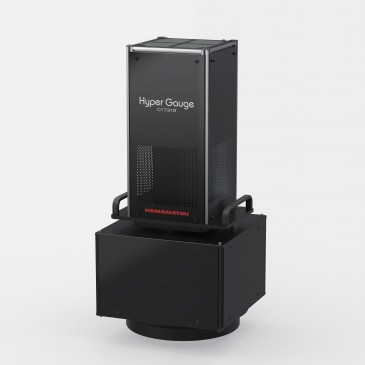
Scientists at Johannes Gutenberg Universität Mainz (JGU), Germany, have developed a molecular thermometer inspired by the gemstone ruby. The thermometer is uniquely a water-soluble molecule, not an insoluble solid, and is dubbed Ruby for its red color from the element chromium, like in the gemstone. Thanks to its solubility, the molecular ruby can measure temperature in liquids, solids, nanoparticles and micelles — contactless.
“We have designed an orange chromium(III)-based molecular complex that can be excited by blue light (430 nm) and emits two luminescence bands in the near-infrared (at 775 nm / 738 nm),” reports Professor Katja Heinze from the JGU Institute of Inorganic Chemistry and Analytical Chemistry, who lead the research team. “The intensity ratio of these two bands is correlated to the temperature. Hence, our complex behaves as an optical thermometer.”
Inspired by the gemstone ruby
The gemstone ruby comprises aluminum oxide with a tiny amount of aluminum replaced by chromium. And chromium is responsible for the absorption — the red color — and the luminescence. “Hence, both ruby and our molecular system contain chromium as photoactive site. That is why we coined our complex ‘molecular ruby.’ ” the professor says. “In contrast to the solid material ruby, our complex is a small discrete molecule that can be functionalized, incorporated in nanoparticles, micelles or solids and can also be used in solution.”
Viable luminescence above 10%
Heinze notes that in previously known complexes of chromium(III) the luminescence quantum yield was too low (<0.1%) for reasonable applications. Hence, the material as merely enjoyed fundamental scientific interest. Until Heinze and her colleagues designed this in fact rather useful orange-chromium(III)-based molecular complex. “Our complex shows a luminescence quantum yield above 10%, which is sufficient for applications,” she confirms.
A water-soluble molecule
The pioneering thermometer is a water-soluble molecule — an important characteristic that opens up new areas of application: “The molecular complex can be used in aqueous solutions, even in biological media,” Heinze says. “This special feature might be useful for biological and medical applications.”
Optical ratiometric temperature measurement — a new solution
“Traditional optical thermometers typically require two luminescent species, one with temperature-dependent luminescence and a second one with temperature-independent luminescence as reference,” Heinze describes previous technologies. “Our molecular complex delivers two emission bands. Hence, it can be viewed as simple two-in-one system. This is certainly much more convenient and reliable than a two-component system.”
Next steps
Going forward, Heinze and her team are seeking collaborators to put their molecular thermometer into action in biological applications and medical diagnostics. Furthermore, the professor envisions integrating her team’s innovation with other sensing options, such as pressure or pH measurement.
The research is detailed in the article “Thermo-Chromium: A Contactless Optical Molecular Thermometer," published in Chemistry — A European Journal, and in “[Cr(ddpd)2]3+: A Molecular, Water-Soluble, Highly NIR-Emissive Ruby Analogue,” published in the journal Angewandte Chemie.
Written by Sandra Henderson, research editor Novus Light Technologies Today























 Back to Features
Back to Features

























